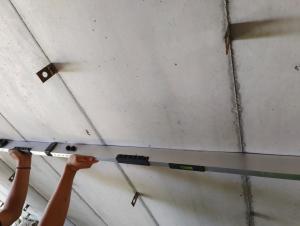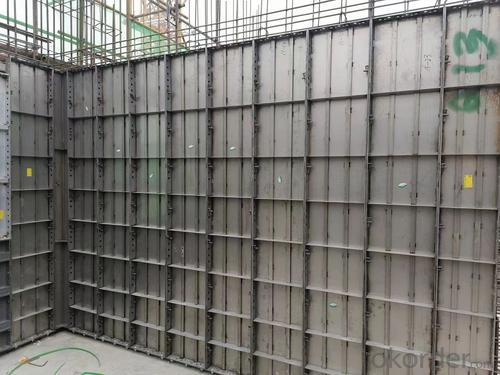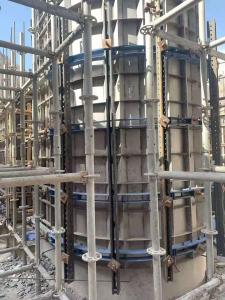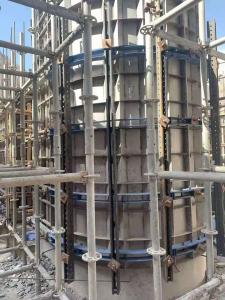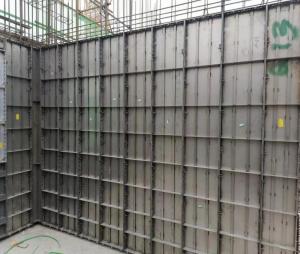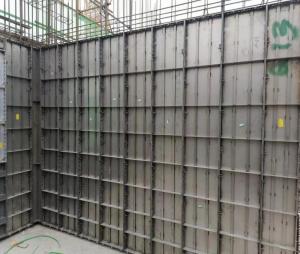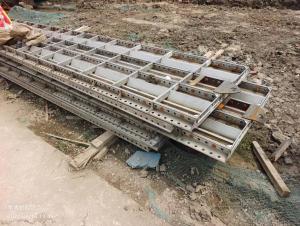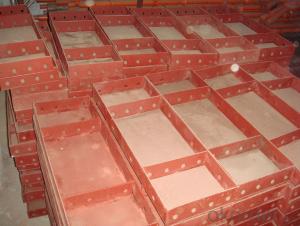Best qaulity of construction formwork,concrete column formwork, Stainless Steel Formwork
- Loading Port:
- Shanghai
- Payment Terms:
- TT or LC
- Min Order Qty:
- 1 set
- Supply Capability:
- 1000000 set/month
OKorder Service Pledge
OKorder Financial Service
You Might Also Like
Stainless steel formwork
Replaceable size aluminum formwork :400X1200mm , 400X1500mm
FORMWORK FOR INFRASTRUCTURE PROJECTS
Varying from bridge piers to hydraulic climbing for tank and silos, can help you find the best solution, no matter how difficult the shape of the concrete structure are.
Advantages:
1 Stainless steel formwork, 100% follow the design of aluminum alloy formwork system, it is interchangeable, compatible and can be used together with aluminum formwork at the same time .
2It is made of high-strength stainless steel strip by rolling and laser welding. It has good corrosion resistance and high density,is not easy to rust and has no fire hazard.
3Long service life, many turnover times, high recycling value
The number of turnovers is large, especially the characteristics of no dust, no need to brush or less mold release agent, and the characteristics of low renovation costs will bring unlimited optimistic prospects to it.

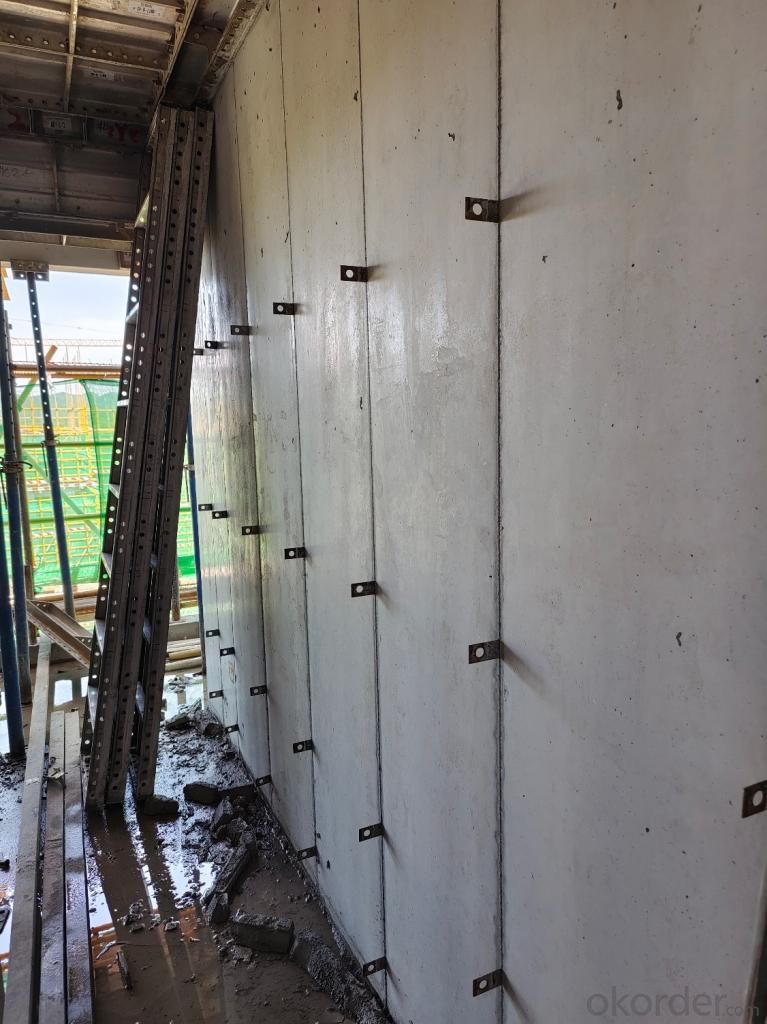
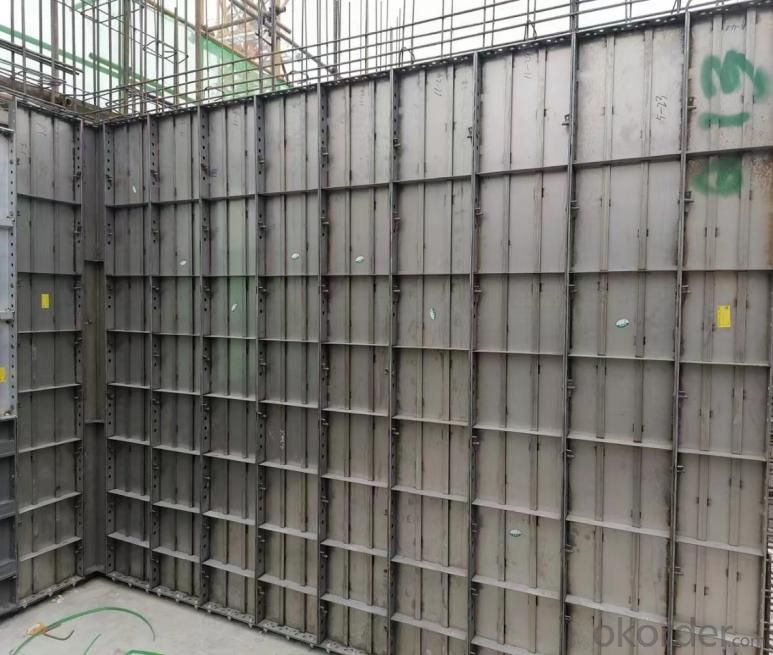
- Q: Can steel formwork be used for both horizontal and vertical concrete placements?
- Indeed, both horizontal and vertical concrete placements can utilize steel formwork. The utilization of steel formwork offers a robust and sturdy framework, rendering it appropriate for a wide range of concrete placements. Its durability and stability enable it to endure the force exerted by the moist concrete, guaranteeing the preservation of its shape and structure throughout the curing phase. Steel formwork exhibits versatility, enabling convenient customization and assembly to fulfill the precise demands of horizontal and vertical concrete placements. Regardless of whether it pertains to the construction of slabs, walls, columns, or beams, steel formwork serves as a dependable and effective solution for generating superior concrete structures.
- Q: Can steel formwork be used for hotel construction projects?
- Yes, steel formwork can be used for hotel construction projects. Steel formwork is a versatile and durable solution for constructing concrete structures, including hotels. It offers several advantages such as high strength, durability, and reusability. Steel formwork is capable of withstanding the pressure exerted by wet concrete and can be easily assembled and dismantled, making it suitable for use in various construction projects, including hotels. Additionally, steel formwork provides a smooth and accurate finish to concrete structures, ensuring high-quality construction.
- Q: How is steel formwork constructed?
- Steel formwork is constructed by following a systematic process that involves several steps. The first step is to determine the dimensions and requirements of the concrete structure that needs to be formed. This includes taking into account the shape, size, and design of the structure. Once the dimensions are finalized, steel sheets are cut according to the required sizes and shapes. These sheets are then assembled and connected using different methods such as welding or bolting, depending on the design and strength requirements. The connections between the steel sheets are essential to ensure stability and rigidity of the formwork. After the assembly of the steel sheets, additional components such as stiffeners, braces, and beams are added to provide structural support and reinforcement to the formwork. These components help to distribute the load evenly and prevent any deformation during the pouring and curing of the concrete. Once the formwork structure is fully assembled and reinforced, it is placed in position and secured to the ground or existing structures using anchors or supports. This ensures that the formwork remains stable and in place during the concrete pouring process. The final step involves waterproofing the steel formwork to prevent any leakage or seepage of water from the concrete. This is typically done by applying a waterproofing membrane or coating to the inner surface of the formwork. Overall, the construction of steel formwork requires careful planning, precise cutting, accurate assembly, and proper reinforcement. It is crucial to follow industry standards and guidelines to ensure the structural integrity and safety of the formwork system.
- Q: How does steel formwork impact the overall construction cost?
- Steel formwork is widely favored in the construction industry due to its durability, versatility, and reusability, making it a popular choice. When considering the impact that steel formwork has on the overall construction cost, there are several factors that need to be taken into consideration. To begin with, one of the main advantages of steel formwork is its longer lifespan compared to traditional timber formwork. This means that there is less need for frequent replacements, resulting in cost savings. By spreading the initial investment in steel formwork across multiple construction projects, there is no need for continuous purchases of new formwork materials. Furthermore, steel formwork is known for its superior strength and stability. It can withstand higher concrete pressures, allowing for the construction of taller and more complex structures. This maximizes floor space and enhances the overall efficiency of a project, ultimately reducing construction time and costs. In addition, steel formwork provides a smooth and consistent finish to concrete surfaces, which means that there is less need for additional finishing work. This reduces labor costs and the time required for subsequent trades to begin their work, leading to overall cost savings. Moreover, steel formwork is designed to be easily assembled and disassembled, which facilitates faster construction processes. This efficiency translates into reduced labor costs and shorter project durations, ultimately impacting the overall construction cost. However, it is important to note that the initial investment in steel formwork can be higher compared to other formwork materials such as timber or aluminum. Nevertheless, the long-term benefits and potential cost savings associated with steel formwork outweigh this initial expense. In conclusion, steel formwork has a positive impact on the overall construction cost due to its durability, reusability, and efficiency. Its longer lifespan, strength, and ease of use contribute to cost savings through reduced material replacements, shorter project durations, and minimized finishing work. Despite the higher initial investment, the numerous advantages of steel formwork make it a cost-effective choice for construction projects.
- Q: What are the different sustainability aspects of using steel formwork?
- There are several sustainability aspects associated with the use of steel formwork in construction projects. First and foremost, steel is a highly durable material that can withstand heavy loads and extreme weather conditions. This means that steel formwork can be reused multiple times, reducing the need for frequent replacements and minimizing waste generation. Additionally, steel formwork is resistant to warping, shrinking, and expanding, ensuring consistent and accurate dimensions in the construction process. Another important sustainability aspect of steel formwork is its high strength-to-weight ratio. Compared to other formwork materials, such as wood or plastic, steel is much lighter while still maintaining its structural integrity. This reduces the amount of energy required for transportation and handling, thereby decreasing carbon emissions and fuel consumption. Furthermore, steel is a recyclable material. At the end of its lifespan, steel formwork can be easily dismantled and sent to recycling facilities where it can be melted down and reused to manufacture new steel products. This helps to conserve natural resources and reduce the demand for virgin materials. Moreover, steel formwork offers significant time and cost savings. Its reusability eliminates the need for constant purchases of new formwork materials, reducing construction expenses. Additionally, the ease of assembly and disassembly speeds up the construction process, resulting in shorter project durations and reduced energy consumption. Lastly, steel formwork provides a smooth and uniform surface finish, reducing the need for additional finishing materials such as plaster or paint. This reduces material consumption and waste generation, contributing to a more sustainable construction process. In conclusion, the use of steel formwork in construction projects offers various sustainability benefits, including durability, reusability, recyclability, energy efficiency, cost savings, and reduced material consumption.
- Q: How does steel formwork handle different concrete air content requirements?
- Steel formwork does not directly handle concrete air content requirements. The air content in concrete is mainly controlled by the mix design and the use of air-entraining agents. Steel formwork, being a rigid and non-porous material, does not have any direct influence on the air content in concrete. However, formwork design and construction practices can indirectly affect the air content by ensuring proper compaction and consolidation of the concrete, which is crucial for achieving the desired air content.
- Q: What are the common safety guidelines when working with steel formwork in confined spaces?
- When working with steel formwork in confined spaces, some common safety guidelines include ensuring proper ventilation to prevent the buildup of hazardous gases, regularly monitoring the atmosphere for toxic substances, providing adequate lighting and emergency exit routes, wearing appropriate personal protective equipment such as gloves, safety glasses, and respiratory protection, training workers on the potential hazards and safe work practices, and having a standby person outside the confined space to monitor and assist if needed.
- Q: How does steel formwork handle concrete curing additives?
- Steel formwork is a popular choice for concrete construction due to its durability and strength. When it comes to handling concrete curing additives, steel formwork is highly compatible and can effectively accommodate the use of such additives. Concrete curing additives, such as accelerators or retarders, are used to modify the setting and hardening time of concrete. These additives are typically added to the concrete mixture during the mixing process or applied to the surface of the formwork before pouring the concrete. Steel formwork is not adversely affected by the presence of curing additives in the concrete. It is resistant to chemical reactions and can withstand the potentially corrosive nature of certain additives. This ensures that the steel formwork remains structurally sound and maintains its integrity throughout the concrete curing process. Furthermore, steel formwork offers a smooth and non-porous surface, which allows for easy application and penetration of curing additives. This facilitates the even distribution of additives across the concrete surface, promoting consistent curing and optimal strength development. Moreover, steel formwork is reusable, which means that it can be used for multiple concrete pours. This reusability factor is particularly advantageous when working with concrete curing additives, as the formwork can be easily cleaned after each use, ensuring that no residue or build-up of additives remains on the surface. This helps to prevent any potential interference with subsequent concrete pours or compromising the quality of the cured concrete. In summary, steel formwork is well-suited for handling concrete curing additives. Its chemical resistance, smooth surface, and reusability make it an ideal choice for accommodating the use of curing additives, ensuring efficient and effective concrete curing.
- Q: How does steel formwork handle reinforcement placement?
- Steel formwork handles reinforcement placement by providing a rigid and sturdy structure that holds the reinforcement bars in place during the concrete pouring process. The formwork is designed with pre-determined spaces and supports to accurately position the reinforcement bars in the desired locations as per the structural drawings. This ensures that the reinforcement is properly aligned and secured before the concrete is poured, resulting in a strong and durable structure.
- Q: Can steel formwork be custom-made?
- Yes, steel formwork can be custom-made. Steel is a versatile material that can be easily shaped and welded to create formwork that meets specific project requirements. Custom-made steel formwork is often used in construction projects where standard formwork systems may not be suitable due to unique design elements or complex geometries. By customizing the steel formwork, construction companies can ensure that it fits perfectly, resulting in efficient and accurate concrete pouring, reducing waste and saving time and costs. Custom-made steel formwork also offers the advantage of durability and reusability, providing long-term benefits for multiple construction projects.
Send your message to us
Best qaulity of construction formwork,concrete column formwork, Stainless Steel Formwork
- Loading Port:
- Shanghai
- Payment Terms:
- TT or LC
- Min Order Qty:
- 1 set
- Supply Capability:
- 1000000 set/month
OKorder Service Pledge
OKorder Financial Service
Similar products
Hot products
Hot Searches


